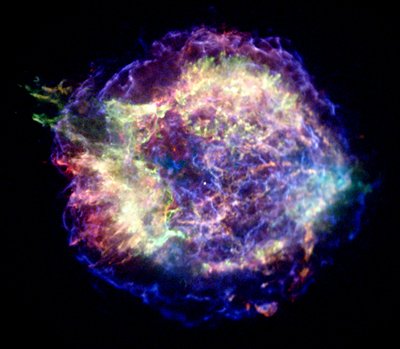Cosmic rays, an enigmatic and compelling phenomenon of astrophysics, are high-energy particles that traverse the cosmos and culminate their journey in our atmosphere. Their very existence raises profound questions about the nature of the universe, the origins of energies that exceed conventional comprehension, and the intricate fabric of reality itself. While these particles are often merely regarded as curiosities within scientific exploration, their study unveils fundamental aspects of cosmic processes and the origins of matter and energy.
The term “cosmic rays” encompasses a multitude of particles, predominantly protons, but also includes heavier nuclei and electrons. These particles are infused with energies that astonish even the most seasoned physicists. To provide a frame of reference, some cosmic rays possess energies on par with those achieved in terrestrial particle accelerators, yet they are often millions of times more energetic than any man-made source. This characteristic alone renders them a subject of fascination, as they traverse vast distances from distant astronomical events, traversing the vast expanse of interstellar and intergalactic space.
To appreciate the essence of cosmic rays, it is imperative to delve into their sources. The majority of these high-energy particles are believed to originate from supernova explosions and active galactic nuclei. In these cataclysmic events, immense gravitational and magnetic forces propel particles to near-light speeds. Other conjectured origins include radiative processes in pulsars, neutron star collisions, and even gamma-ray bursts—each event serving as a potent generator of cosmic ray particles. Such celestial phenomena offer a tantalizing glimpse into the violent and dynamic nature of the universe.
Upon their arrival at Earth, cosmic rays are met with an atmospheric shield, as they interact with molecules in the upper atmosphere, subsequently producing extensive air showers. This cascade of secondary particles constitutes a phenomenon observable through ground-based detectors, allowing researchers to study the intricate nature of cosmic rays indirectly. However, the study of cosmic rays is not merely an academic pursuit; it has considerable implications for our understanding of fundamental physics, the behavior of matter under extreme conditions, and the potential hazards associated with human spaceflight.
The fascination with cosmic rays extends beyond their sources and interactions. Their uniformity in distribution across the sky prompts deliberation about the isotropy of cosmic sources, suggesting that cosmic rays may emanate from a myriad of localized events scattered throughout the universe. This isotropy challenges our assumptions about cosmic geography and compels scientists to reevaluate their models of the universe’s structure.
A particularly intriguing aspect of cosmic rays is their role in astrobiology and the investigation of life beyond Earth. Cosmic rays contribute to various biological and chemical processes on our planet. The high-energy interactions between cosmic rays and atmospheric gases can lead to the formation of isotopes, as well as the generation of new biological compounds in the soil. These interactions might have implications for prebiotic chemistry, potentially guiding our understanding of life’s origins and adaptations to extraterrestrial environments.
Moreover, the exploration of cosmic rays sheds light on the fundamental forces of nature. Researchers utilize data derived from cosmic ray observations to probe the limits of the Standard Model of particle physics. Events such as the supernova SN 1998bw, which produced intense bursts of cosmic rays, offer opportunities to test theoretical predictions and explore phenomena such as dark matter and the interplay between matter and antimatter. Each data point enriches our comprehension of the universe’s laws and the fundamental constituents of reality.
In recent years, the advent of advanced technologies has revolutionized the field of cosmic ray research. Sophisticated detectors, such as spaceborne observatories and ground-based arrays, have vastly improved our capacity to detect, analyze, and model cosmic ray interactions. Projects such as the Pierre Auger Observatory and the IceCube Neutrino Observatory have yielded invaluable insights into cosmic ray origins and characteristics. These state-of-the-art facilities facilitate the exploration of celestial dynamics at unprecedented levels of sensitivity and precision.
Yet, the study of cosmic rays is not without its challenges. The inherent unpredictability of cosmic ray events complicates data collection and analysis. Additionally, the secondary particles produced during interactions can obscure the source and nature of the primary cosmic rays, further entangling the research landscape. Despite these hurdles, the pursuit of knowledge in this domain remains fervent, driven by the inexhaustible curiosity to unravel the mysteries held within these cosmic wanderers.
In summary, cosmic rays represent a multi-faceted and intricate phenomenon that encapsulates the very essence of astrophysics. Their origins, interactions, and eventual impacts on terrestrial and cosmic scales illuminate the complex interplay between matter, energy, and the universe itself. The allure of cosmic rays lies not merely in their scientific importance but also in the philosophical questions they pose—concerning the nature of existence, the limits of human understanding, and the continual pursuit of knowledge that drives scientific inquiry. As we advance our exploration of the cosmos, cosmic rays will undoubtedly remain a cornerstone of our endeavors to decipher the universe’s profound enigmas.












